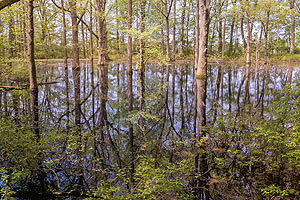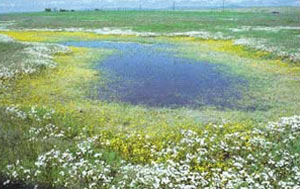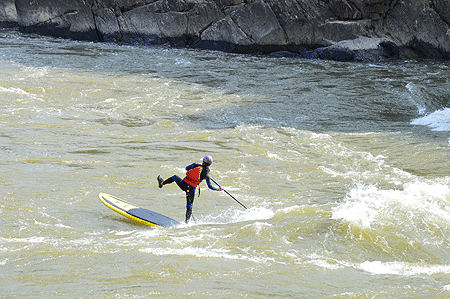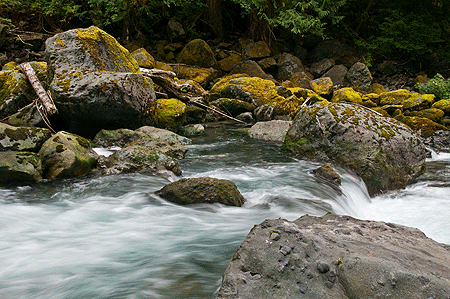EPA Launches Clean Water Act Jurisdictional Determination Website
By Joel Beauvais
We live in a society that increasingly allows us to visualize information and data on our phones, TVs, and computers. That’s why I’m excited to announce that EPA is once again demonstrating its commitment to transparency in decision-making by launching a new website that helps the public see where the Clean Water Act applies. The website will increase public understanding of the types of waters that are protected by the Clean Water Act.
The launch of the website supports a commitment made by EPA Administrator Gina McCarthy and Assistant Secretary of the Army (Civil Works) Jo-Ellen Darcy to develop a publically available website to house Clean Water Act jurisdictional determinations. EPA worked in coordination with the Corps to develop a website that includes all CWA jurisdictional determinations made since August 28, 2015, the effective date of the Clean Water Rule. This includes jurisdictional determinations made under both the Rule and under the previous regulations while the Rule is stayed. Note that the website only makes use of information that was already publicly available online and does not display all waters of the United States subject to the Clean Water Act, only those for which a jurisdictional determination has been requested.
The website is the first to gather and interactively display jurisdictional determinations under the Clean Water Act across the country. This builds upon the existing jurisdictional determination public interface on the U.S. Army Corps of Engineers Headquarters website.
Users are able to search, sort, map, and view information from jurisdictional determinations using different search parameters and filters. The easy-to-navigate website provides information about the presence or absence of jurisdictional waters where landowners requested jurisdictional determinations, and only makes use of public information. The website will increase and improve transparency regarding agency decision-making on Clean Water Act geographic jurisdictional matters.
I anticipate that the website will also improve jurisdictional determination requests, as the public will be able to easily access information from nearby and related determinations. Increased public access to information about how our jurisdictional decisions are made can assist landowners by providing information about the locations and types of resources that are and are not protected by the Clean Water Act.
We look forward to hearing feedback from stakeholders in the weeks and months ahead regarding website functionality and usability. We are committed to increasing the public’s access to information about how our decisions are made, because this is a key component of making the agencies’ programs more consistent, predictable, and environmentally effective.
For more, visit: https://watersgeo.epa.gov/cwa/CWA-JDs/.


 Prairie potholes are a complex of glacially formed wetlands, found from central Iowa through western Minnesota, eastern South Dakota, and North Dakota. Potholes accumulate and retain water, reducing floodwaters and filtering pollution before it goes downstream into nearby streams and rivers. Prairie potholes are also rich habitat for plants and wildlife. In particular they are vital to hunting in America, as they play host to 18 species of waterfowl. They are also are popular for birdwatching, with 96 species of songbirds, 36 species of waterbirds, 17 species of raptors and 5 species of upland game birds.
Prairie potholes are a complex of glacially formed wetlands, found from central Iowa through western Minnesota, eastern South Dakota, and North Dakota. Potholes accumulate and retain water, reducing floodwaters and filtering pollution before it goes downstream into nearby streams and rivers. Prairie potholes are also rich habitat for plants and wildlife. In particular they are vital to hunting in America, as they play host to 18 species of waterfowl. They are also are popular for birdwatching, with 96 species of songbirds, 36 species of waterbirds, 17 species of raptors and 5 species of upland game birds. Carolina and Delmarva bays are ponded wetlands along the Atlantic coastal plain from northern Florida to New Jersey. Carolina bays are most abundant in North Carolina and South Carolina, while those found in the Delmarva Peninsula are commonly referred to as Delmarva bays. Bays typically are close to each other or to streams, and connect to each other and to downstream waters in large rain events. Carolina bays and Delmarva bays filter out nitrogen, which reduces the pollution entering groundwater and flowing downstream. These bays are important nursery grounds for amphibians and reptiles.
Carolina and Delmarva bays are ponded wetlands along the Atlantic coastal plain from northern Florida to New Jersey. Carolina bays are most abundant in North Carolina and South Carolina, while those found in the Delmarva Peninsula are commonly referred to as Delmarva bays. Bays typically are close to each other or to streams, and connect to each other and to downstream waters in large rain events. Carolina bays and Delmarva bays filter out nitrogen, which reduces the pollution entering groundwater and flowing downstream. These bays are important nursery grounds for amphibians and reptiles. Pocosins are evergreen shrub and tree-dominated landscapes that are found from Virginia to northern Florida, but mainly in North Carolina. Typically, there is no standing water present in these peat-accumulating wetlands, but a shallow water table leaves the soil saturated for much of the year. The slow movement of water through pocosins removes nutrient pollution and acidifies the water. This water is slowly released to downstream waters and estuaries, where it helps to maintain the proper salinity, nutrients, and acidity.
Pocosins are evergreen shrub and tree-dominated landscapes that are found from Virginia to northern Florida, but mainly in North Carolina. Typically, there is no standing water present in these peat-accumulating wetlands, but a shallow water table leaves the soil saturated for much of the year. The slow movement of water through pocosins removes nutrient pollution and acidifies the water. This water is slowly released to downstream waters and estuaries, where it helps to maintain the proper salinity, nutrients, and acidity. Vernal pools are shallow, seasonal wetlands that accumulate water during colder, wetter months and gradually dry up during warmer, drier months. In California they typically occur as complexes of pools, connected to each other and to seasonal streams. Vernal pools are rich in biodiversity and wildlife moves between the pool complexes and streams and other downstream waters. With climate change increasing the severity of drought in the West and specifically California, the protection of upstream water resources is even more essential.
Vernal pools are shallow, seasonal wetlands that accumulate water during colder, wetter months and gradually dry up during warmer, drier months. In California they typically occur as complexes of pools, connected to each other and to seasonal streams. Vernal pools are rich in biodiversity and wildlife moves between the pool complexes and streams and other downstream waters. With climate change increasing the severity of drought in the West and specifically California, the protection of upstream water resources is even more essential. Along the Gulf of Mexico from western Louisiana to south Texas, freshwater wetlands occur as a mosaic of depressions, ridges, flats, and mounds on the landscape. Texas coastal prairie wetlands are locally abundant and function together to impact the health of downstream water bodies. Collectively as a complex, Texas coastal prairie wetlands can be connected to each other and contribute flow to downstream waters. Cumulatively, these wetlands control nutrient release levels and rates to downstream waters, as they capture, store, transform, and pulse releases of nutrients to those waters.
Along the Gulf of Mexico from western Louisiana to south Texas, freshwater wetlands occur as a mosaic of depressions, ridges, flats, and mounds on the landscape. Texas coastal prairie wetlands are locally abundant and function together to impact the health of downstream water bodies. Collectively as a complex, Texas coastal prairie wetlands can be connected to each other and contribute flow to downstream waters. Cumulatively, these wetlands control nutrient release levels and rates to downstream waters, as they capture, store, transform, and pulse releases of nutrients to those waters.
